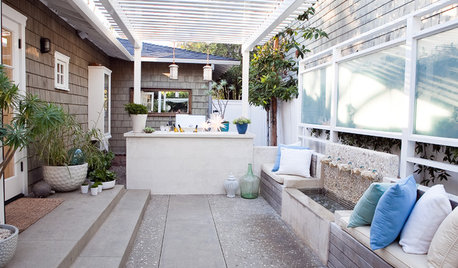What to do now with new Bermuda sod
pdpirate
11 years ago
Featured Answer
Sort by:Oldest
Comments (8)
dchall_san_antonio
11 years agoRelated Professionals
Danbury Landscape Architects & Landscape Designers · Lakewood Landscape Architects & Landscape Designers · Simi Valley Landscape Architects & Landscape Designers · Maple Valley Landscape Contractors · Englewood Landscape Contractors · Firestone Landscape Contractors · Plymouth Landscape Contractors · San Antonio Landscape Contractors · St. Louis Landscape Contractors · West Allis Landscape Contractors · Selma Landscape Contractors · Cooper City Swimming Pool Builders · Lake Forest Swimming Pool Builders · Los Alamitos Swimming Pool Builders · San Juan Capistrano Swimming Pool Builderstexas_weed
11 years agodchall_san_antonio
11 years agopdpirate
11 years agonearandwest
11 years agotexas_weed
11 years agoNG Turf
3 years ago
Related Stories

GARDENING GUIDESHow to Plant a New Lawn From Sod
Take the quick-start route to turf with sod; these installation guidelines will help ensure a healthy and long-lasting lawn
Full Story
GARDENING AND LANDSCAPINGHouzz Survey: See What Homeowners Are Doing With Their Landscapes Now
Homeowners are busy putting in low-maintenance landscapes designed for outdoor living, according to the 2015 Houzz landscaping survey
Full Story
GARDENING GUIDESHow to Prep Your Ground for a Healthy New Lawn
Seed or sod that falls on weedy, lumpy soil is a wasted effort. Follow these steps to ensure that your new lawn will thrive
Full Story
GARDENING GUIDESHow to Plant a New Lawn From Seed
Choose from more grass varieties and save money over sod by starting your lawn from seed
Full Story
TROPICAL STYLECast Away for South Seas Style
Oh, to be in Tahiti right now. The next best thing: tips from South Seas resorts to create that lovely getaway feel at home
Full Story
EARTH DAYThe Case for Losing the Traditional Lawn
Work less, help the environment and foster connections by just saying no to typical turf
Full Story
GREEN BUILDINGHow to Recycle Your Kitchen
Instead of adding to the junk pile — and paying landfill fees — get rid of old appliances, cabinets and countertops the ecofriendly way
Full Story
SAVING WATERHouzz Call: Are You Letting Go of Your Lawn?
Many facing a drought are swapping turf for less thirsty plantings. If you’re one of them, we’d like to hear about it
Full Story
GARDENING GUIDESNew Ways to Think About All That Mulch in the Garden
Before you go making a mountain out of a mulch hill, learn the facts about what your plants and soil really want
Full Story
GARDENING AND LANDSCAPINGPlan Your Patio at Summer's End? Yes!
Score fabulous deals for your deck, garden or patio and put your summer experience to good use in upgrading for the future
Full StoryMore Discussions







rager_w